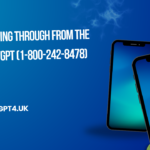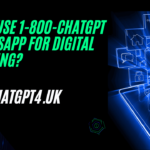As the field of artificial intelligence continues to advance at an unprecedented pace, it is inevitable that ChatGPT-4 will eventually emerge as the next iteration of the popular conversational AI language model.
Based on the capabilities of its predecessor, ChatGPT-3, and the anticipated advances in AI technology, we can speculate about some of the features that ChatGPT-4 may offer. Here are 20 possible features that we may expect to see in ChatGPT-4:
- Enhanced Language Understanding: ChatGPT-4 is likely to feature an even more advanced natural language understanding system that will enable it to better comprehend and respond to complex queries and conversational prompts. This could involve improved parsing of syntax and semantics, as well as more sophisticated algorithms for recognizing and interpreting contextual cues.
- Multi-lingual Capabilities: Building on the success of ChatGPT-3’s multi-lingual capabilities, ChatGPT-4 is likely to offer even more extensive language support. This could involve the addition of new languages, as well as improvements to the accuracy and fluency of existing language models.
- Improved Chatbot Functionality: As a conversational AI model, ChatGPT-4 is expected to offer advanced chatbot functionality, including the ability to simulate human-like conversations with greater accuracy and realism. This could involve improvements to the generation of dialogue and the ability to handle complex interactions and queries.
- Better Personalization: ChatGPT-4 is likely to offer improved personalization features that will enable it to tailor its responses to individual users based on their preferences, behavior, and history. This could involve the integration of machine learning algorithms that learn from user interactions to provide more relevant and personalized responses.
- More Accurate Predictive Capabilities: ChatGPT-4 is expected to offer more accurate predictive capabilities, including the ability to predict user behavior, preferences, and needs based on historical data and contextual cues. This could involve the integration of more sophisticated machine learning algorithms that can extract insights from large datasets.
- Improved Question-Answering Capabilities: ChatGPT-4 is likely to feature even more advanced question-answering capabilities that will enable it to provide more accurate and informative responses to complex queries. This could involve the integration of knowledge graphs and other sources of structured data to enhance the accuracy of its responses.
- Better Integration with Other Platforms: ChatGPT-4 is expected to offer better integration with other platforms and systems, including social media, messaging apps, and other chatbot platforms. This could involve the development of APIs and other integration tools that make it easier to connect ChatGPT-4 with other systems.
- Enhanced Emotional Intelligence: ChatGPT-4 is likely to feature enhanced emotional intelligence that will enable it to better understand and respond to users’ emotions and moods. This could involve the integration of sentiment analysis algorithms and other techniques for recognizing and responding to emotional cues.
- Improved Speech Recognition and Synthesis: ChatGPT-4 is expected to offer improved speech recognition and synthesis capabilities that will enable it to understand and generate speech with greater accuracy and fluency. This could involve the integration of advanced speech recognition and synthesis technologies, including neural TTS and ASR models.
- More Human-like Responses: ChatGPT-4 is likely to offer more human-like responses, including the ability to generate more natural and engaging dialogue that is indistinguishable from human conversation. This could involve improvements to the model’s natural language generation capabilities, as well as the integration of more advanced dialogue management techniques.
- Greater Domain-Specific Knowledge: ChatGPT-4 is expected to offer greater domain-specific knowledge in a wide range of areas, including finance, healthcare, and technology. This could involve the development of specialized language models and training data that are tailored to specific domains, as well as the integration of knowledge graphs and other sources of structured data.
- Advanced Image and Video Analysis: ChatGPT-4 is likely to offer advanced image and video analysis capabilities that will enable it to recognize and analyze visual content with greater accuracy and speed. This could involve the integration of computer vision and deep learning algorithms, as well as the use of pretrained models for object detection, segmentation, and recognition.
- Improved Knowledge Acquisition: ChatGPT-4 is expected to offer improved knowledge acquisition capabilities that will enable it to learn and reason about new concepts and domains more effectively. This could involve the development of more sophisticated learning algorithms that can extract knowledge from unstructured data sources, as well as the integration of automated knowledge graph construction tools.
- Enhanced Data Privacy and Security: ChatGPT-4 is likely to offer enhanced data privacy and security features that will protect user data and prevent unauthorized access. This could involve the implementation of advanced encryption and access control mechanisms, as well as the development of more robust auditing and monitoring tools.
- Better Contextual Understanding: ChatGPT-4 is expected to offer better contextual understanding, including the ability to recognize and interpret complex contextual cues such as tone, intent, and cultural references. This could involve the integration of more sophisticated natural language processing algorithms that can extract meaning from unstructured text data.
- More Efficient Training and Inference: ChatGPT-4 is likely to offer more efficient training and inference, including the ability to train and deploy models faster and with less computational resources. This could involve the development of more efficient optimization algorithms and hardware acceleration techniques, as well as the use of distributed computing and cloud-based infrastructure.
- Improved Error Handling: ChatGPT-4 is expected to offer improved error handling and fault tolerance, including the ability to recover from errors and handle unexpected inputs more gracefully. This could involve the development of more robust error detection and recovery mechanisms, as well as the integration of automated testing and validation tools.
- Better Accessibility: ChatGPT-4 is likely to offer better accessibility features that will enable it to be used by people with disabilities and other accessibility needs. This could involve the integration of text-to-speech and speech-to-text capabilities, as well as the development of accessible user interfaces and interaction paradigms.
- Greater Transparency and Explainability: ChatGPT-4 is expected to offer greater transparency and explainability, including the ability to provide insights into how it makes decisions and generates responses. This could involve the development of explainable AI techniques and tools, as well as the integration of visualizations and other explanatory aids.
- Improved Human-AI Collaboration: ChatGPT-4 is likely to offer improved human-AI collaboration features that will enable it to work more effectively with human users and other AI models. This could involve the development of collaboration tools and frameworks, as well as the integration of human feedback mechanisms and other forms of human-in-the-loop interaction.
Conclusion
In conclusion, while the specific features of ChatGPT-4 are yet to be seen, it is clear that the next iteration of this popular conversational AI language model will likely build on the successes and advances of its predecessors, while offering new capabilities and functionality that enable it to better serve the needs of users and businesses alike.
From enhanced language understanding and multi-lingual capabilities to improved chatbot functionality and better personalization, the potential for ChatGPT-4 is immense, and we can expect it to continue to drive the field of artificial intelligence forward in the years to come.
FAQs
Q: What is ChatGPT-4?
A: ChatGPT-4 is the next iteration of the popular conversational AI language model, developed by OpenAI. It is expected to offer advanced language understanding and conversational capabilities, as well as improved efficiency, accuracy, and other features.
Q: When will ChatGPT-4 be released?
A: The release date of ChatGPT-4 has not been announced yet. However, it is expected to be released sometime in the next few years.
Q: What are some possible features of ChatGPT-4?
A: Some possible features of ChatGPT-4 include enhanced language understanding and multi-lingual capabilities, improved chatbot functionality, better personalization, advanced image and video analysis, improved knowledge acquisition, enhanced data privacy and security, better contextual understanding, more efficient training and inference, improved error handling, better accessibility, greater transparency and explainability, and improved human-AI collaboration.
Q: Will ChatGPT-4 be more powerful than previous versions?
A: Yes, ChatGPT-4 is expected to be more powerful and capable than previous versions, building on the successes and advances of its predecessors while offering new features and functionality.
Q: What are the potential applications of ChatGPT-4?
A: ChatGPT-4 could have a wide range of applications, including chatbots, virtual assistants, customer service, language translation, content creation, and more.
Q: Will ChatGPT-4 be able to learn from user interactions?
A: Yes, ChatGPT-4 is expected to be able to learn from user interactions and improve its language understanding and conversational capabilities over time.
Q: How will ChatGPT-4 be trained?
A: ChatGPT-4 is likely to be trained on large amounts of data, using advanced deep learning and natural language processing algorithms.
Q: Will ChatGPT-4 be accessible to developers and businesses?
A: Yes, ChatGPT-4 is expected to be accessible to developers and businesses, who can use it to build their own conversational AI applications and services. However, the specific licensing and pricing details have not been announced yet.








1 thought on “Top Best 20 Possible Features of ChatGPT-4”